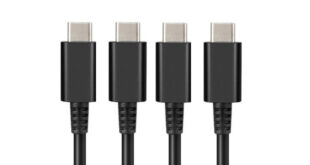There is nothing in this industry that stimulates as many opinionated hot takes as Nintendo.
Covering Nintendo always feels a bit different to covering other companies. Of course, all brands – be they PlayStation, Xbox, Apple or Ouya… OK, maybe not ALL brands – have their advocates. It’s impossible to compliment or criticise any of them without being accused of doing so through personal agenda, as opposed to through logic and reasoning.
Nintendo still stands above them all as the platform that enjoys the most loyal support. But we live in a universe where every action has an equal and opposite reaction, so for every Nintendo supporter who proudly wears the colours, there is another who wants to bring them down a peg. The result? A cacophony of social media hell.
The reaction to the Nintendo Switch unveiling last night was, judging by my Twitter feed at least, broadly positive. There was of course plenty of take my money” and I want it now” style exclamations, and they were joined by a pretty optimistic chorus of quiet compliments. Less positive, again broadly speaking, was the reaction from analysts. Switch does some cool stuff, certainly, but can it really appeal to an audience beyond the devoted?
So we’re going full Rumsfeld in an effort to try and cut through the noise and have a look at what the Nintendo Switch represents and whether it can revive Nintendo’s console fortunes at a time when the company’s future is looking increasingly smartphone-shaped.
KNOWN KNOWNS
- THE DESIGN: The Nintendo Switch is a hybrid console designed for play in the home but also on the move. At home, the console unit – which is the device housed behind the screen – sits in a static dock, which outputs the video signal to a TV. Games can then be played either with the ‘J-Con’ detachable controllers, of which there are two, or via a dedicated (and presumably separately purchased) controller. When going to the loo (or perhaps even venturing outside) owners can pluck the console from the dock, attach the controllers and use Switch like a sort of tablet, albeit one with physical controls. Said controllers can be detached at any time, and even shared among friends.
- LOCAL MULTIPLAYER: Perhaps the real champion here is the in-built local multiplayer. Local multiplayer has slowly become rarer in console gaming for a reason, but it’s certainly true that among a portion of the fanbase at least, it’s sorely missed. Playing online in blissful isolation may be fine for many, but there’s no arguing that spanking someone sitting physically next to you – and getting all up in their face and maybe even punching them – is a richer experience. And this promise is at the heart of the Switch’s USP.
- THE MESSAGE: Why was the Wii U such a flop? To say it was all down to the confused message is a vast over-simplification, but the messaging was certainly a huge problem – and one that the company looks to have addressed with Switch. Play on your sofa, take it with you to the bog. Simple and appealing. Where Switch looks at risk of veering into Wii U territory is with its controllers. They can be used with one in each hand. Or users can attach them both to a peripheral to fashion a sort of Saturn 3D Controller type hybrid. Or they can use an actual separate normal controller. Or, if they have exceptionally tiny hands, they can take one of the standard pair, turn it on its side and use that. If WiiMote compatibility is announced I might just die.
- THE INNARDS: Nvidia is supplying the machine’s innards, marking an end to AMD’s recent console monopoly. The architecture is a custom version of the Tegra chipset found in Nvidia’s portable gaming tablet Shield.
- MARIO: Super Mario Switch is coming! Well, it might not be called that. Maybe this should have gone into the Known Unknowns list, but really the key thing here is that we’re getting a new 3D Mario platformer. And a new Mario Kart, by the looks of it. Then of course, there’s Zelda, which looks pretty damn delicious in its latest footage. It’s a solid line-up that will guarantee day one sales among the faithful.
KNOWN UNKNOWNS
- PRICE: All too often, it’s really all that matters. You can build the most amazing piece of tech in the history of all creation, but if people can’t afford it, it counts for nowt. Should Switch launch for, say, 200, then Nintendo will be onto a winner. If it turns out to be closer to 300 or, god forbid, even more than that, Nintendo might face a stiff challenge convincing people that Switch really does offer something unique that isn’t already ticked off by people’s existing iPads, smartphones, handhelds, consoles and PCs.
- SPECS: Word on the street is that the portable screen is 720p, while 1080p is offered on the TV when Switch is docked. Now, the lack of 4K should worry no-one. It may be the current console buzzword but, really, we’re years away from 4K mattering in big enough numbers to warrant serious consideration. People also seem to be readily accepting the rumoured 720p portable resolution, but honestly this does leave me concerned. Most smartphones pack far more pixels into far less real estate, and if Switch is instantly harsher on the eye than the device they already spend all day every day looking at, that’s not great.
- BATTERY: Battery life is the other big question. The Wii U’s portable battery life was poor, and Switch is going to need to at least cover a flight from Heathrow to New York – and possibly far more – if it wants to really establish itself as a portable machine.
- POWER: And that leads onto the next question. We don’t know how powerful the custom Tegra chipset is, but if it’s too powerful, then battery life is going to take a hit. If it’s not powerful enough, however, it might not even be able to graphically compete with the leading smartphone titles, let alone consoles. Nintendo has confirmed that the home dock doesn’t offer any additional computing power, but might it supercharge the Tegra to boost TV performance? Let’s hope so, because a 720p portable gaming system could fall well short on the established graphical standards when viewed on your 40” LED flatscreen.
- TOUCHSCREEN: Speaking of screens, is the Switch’s panel a touchscreen? For a device that wants to market itself as a properly portable tablet you’d hope so, but note that not once was anyone seen touching the screen in the teaser video. A lack of touchscreen would also kill the presumption that Switch will be compatible with Nintendo’s smartphone games, too.
- STORAGE: We also need to know what Nintendo’s storage plans are. This was an(other) area in which the Wii U fell desperately short. We know there’s no disk drive, but what is the game card capacity? How much space will users have for downloads? Will there be an SD port? Two or three of those big Nintendo exclusives will soon eat into standard memory card sizes, certainly. Even a PS4 or Xbox One’s 500GB HDD feels woefully inadequate in this day and age. Will the move away from discs and installations for physical games be enough to offset this, especially at a time when more and more people are going exclusively digital?
- ONLINE: Another issue is Nintendo’s online infrastructure. The company has been playing catch up in this area for ages. A decent service that more closely

 MCV/DEVELOP News, events, research and jobs from the games industry
MCV/DEVELOP News, events, research and jobs from the games industry



